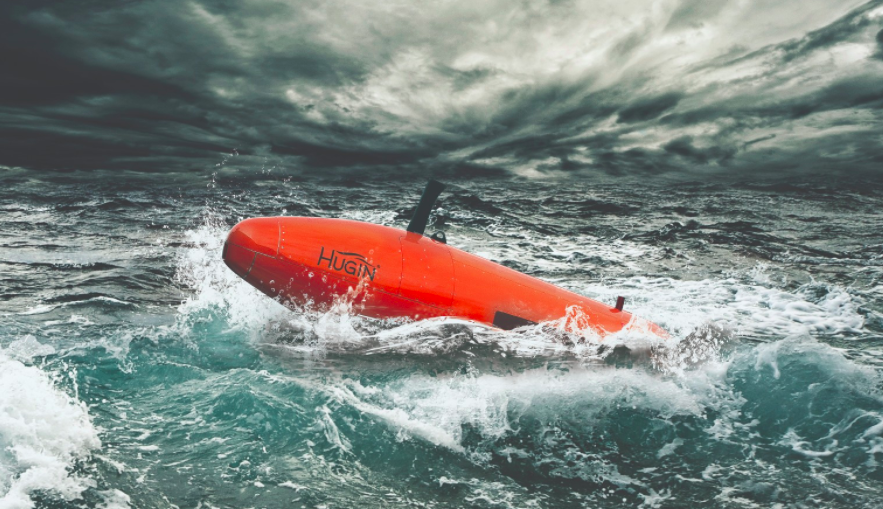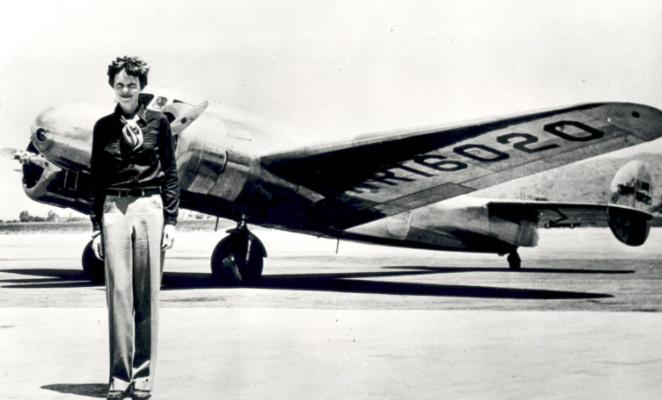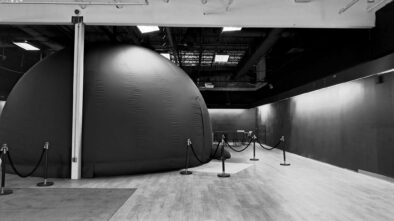A Team of Experts out of Charleston, South Carolina (Deep Sea Vision) Believed to Have Found Amelia Earhart’s Aircraft
Deep Sea Vision Sonar Image May Unlock One of the Greatest Mysteries in Aviation History
CHARLESTON, S.C., Jan. 29, 2024 /PRNewswire/ — After an extensive deep-water search, a talented group of underwater archaeologists and marine robotics experts have unveiled a sonar image that may answer the greatest modern mystery – the disappearance of Amelia Earhart.
Captured westward of Earhart’s projected landing point, in a swath of the Pacific untouched by known wrecks, the image reveals contours that mirror the unique dual tails and scale of her storied aircraft. Deep Sea Vision (DSV), a Charleston, South Carolina-based marine robotics company led by CEO Tony Romeo, was pursuing the missing aircraft using the “Date Line theory” of her disappearance nearly 87 years ago. Originally theorized in 2010 by Liz Smith, a former NASA employee and amateur pilot, the Date Line theory attributes Earhart’s disappearance to simply forgetting to turn the calendar back one day as she flew over the International Date Line. Smith suggested that Amelia’s navigator, Fred Noonan, miscalculated his celestial star navigation by simply forgetting to turn back the date from July 3 to July 2 as they flew across the Date Line, creating a westward navigational error of 60 miles.
As a private pilot, DSV’s CEO Tony Romeo and his brother Lloyd Romeo believed the idea had merit and began digging deeper into the celestial math Smith had laid out. The Romeos came to believe that after 17 hours of exhausting flying it was quite plausible that Earhart’s navigator Fred Noonan could have made such an error. The theory and area described by Smith had never been searched – until now.
Romeo was not surprised to find the aircraft intact, saying, “We always felt that she [Earhart] would have made every attempt to land the aircraft gently on the water, and the aircraft signature that we see in the sonar image suggests that may be the case.” Romeo hopes they can answer that question very soon. “We’re thrilled to have made this discovery at the tail end of our expedition, and we plan to bring closure to a great American story.”
The Deep Sea Vision team, a diverse group of experts, proved that diligent efforts and next-generation technology could take on the monumental task of finding Earhart’s Lockheed Electra. For 90 days, the DSV team searched across 5,200 square miles of the Pacific Ocean floor, more than all previous searches combined. Their secret weapon, the HUGIN 6000, is an autonomous underwater marvel, modified by their own hands to outperform any underwater submersible used before. It is the most capable system available in the world, able to reach full ocean depth. DSV further improved the equipment by modifying the side scan sonar to search nearly 1,600-meter-wide swaths instead of the normal 450 meters. The changes were made possible by DSV President of Operations, Craig Wallace, who Romeo recruited directly from the sonar manufacturer to help put the expedition together.
The team launched the expedition out of a tiny island in the Pacific Ocean about a four-day cruise from where the discovery was made. Each dive of the sonar equipment lasted nearly two days and collected several terabytes of data scanning the sea floor. The international team worked around the clock, analyzing the imagery using cutting edge software that was being written as the mission went along. Their discovery, made at the conclusion of the expedition, was a testament to technological triumph and the unyielding pursuit of closure for an American icon.

Earhart’s fate has been the source of speculation and conspiracy theories since her mysterious disappearance in 1937. She remains a defining icon of her generation, women’s rights and a pioneering spirit of early aviation. DSV believes they are one step away from closure to this great mystery and will be keeping all other information, including the exact location, strictly confidential. While Romeo is very optimistic about their find, he acknowledges that there was a great deal of internal debate about whether to release the sonar image publicly. Many prominent authorities have been working to validate DSV’s findings, including Dorothy Cochrane, Aeronautics Curator at the Smithsonian’s National Air and Space Museum, who stated, “We are intrigued with DSV’s initial imagery and believe it merits another expedition in the continuing search for Amelia Earhart’s aircraft near Howland Island.”
Unlocking the mystery of Earhart’s whereabouts is one of several projects for Romeo and Deep Sea Vision. The investment they spent to launch the company is already leading to more exciting projects. DSV has already concluded a yet to be announced project in the Pacific and is currently providing their technology for a longer-term project in Australia.
About Deep Sea Vision
Deep Sea Vision is a marine robotics company specializing in deep ocean exploration and survey. With the latest variant of the HUGIN 6000, Deep Sea Vision owns the most advanced autonomous underwater vehicle (AUV) commercially available. Deep Sea Vision was founded by Tony Romeo, a graduate of the United States Air Force Academy, and led by Operations Chief, Craig Wallace, who was the former HUGIN product manager at Kongsberg Maritime. Deep Sea Vision is aiming to become the market leader in mineral exploration and habitat mapping over the next decade.
SOURCE Deep Sea Vision



So interesting . Hope that everything works out!